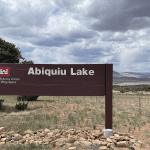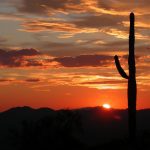- 3,400 Forest Service employees let go.
- Department of Interior terminates 2,300 staff.
- Advocates fear crippling effects on public lands.
- Some warn of wildfire and water management risks.
February 18, 2025 — A sweeping shake-up across America’s federal land-management agencies has caused widespread alarm among conservationists, state officials, and local communities. Announced on Friday, February 14, 2025, these firings affect personnel in the U.S. Forest Service (USFS), the Department of the Interior (DOI), and other bureaus with responsibilities ranging from wildfire prevention to water infrastructure oversight. With more than 5,700 people reportedly laid off nationwide, questions loom about the long-term impacts on public safety, environmental stewardship, and rural economies.
Forest Service Cuts and Wildfire Concerns.
According to a Politico report dated Friday, February 14, 2025, the USFS will let go of 3,400 employees still in their probationary period. While frontline firefighters appear unaffected, many field staff working on road and trail maintenance, timber production, and watershed restoration have lost their jobs. Critics say these cuts could weaken efforts to mitigate increasingly intense wildfires across millions of acres of federal lands.
report dated Friday, February 14, 2025, the USFS will let go of 3,400 employees still in their probationary period. While frontline firefighters appear unaffected, many field staff working on road and trail maintenance, timber production, and watershed restoration have lost their jobs. Critics say these cuts could weaken efforts to mitigate increasingly intense wildfires across millions of acres of federal lands.
Colorado Governor Jared Polis underscored the heightened risk in a press statement dated Friday, February 14, 2025 : “It’s reckless endangerment to Coloradans and could increase homeowners insurance costs further for the Trump Administration to take a hammer to those who help protect us against wildfires through watershed protection and forest management, tipping the scale toward more fire danger with potentially devastating consequences.”
: “It’s reckless endangerment to Coloradans and could increase homeowners insurance costs further for the Trump Administration to take a hammer to those who help protect us against wildfires through watershed protection and forest management, tipping the scale toward more fire danger with potentially devastating consequences.”

Department of the Interior Layoffs.
Simultaneously, the DOI fired at least 2,300 employees, impacting the National Park Service, Bureau of Land Management (BLM), U.S. Fish and Wildlife Service, and more. High Country News (Monday, February 17, 2025) reported these moves struck fear and grief in mountain communities and small towns. The publication stated
(Monday, February 17, 2025) reported these moves struck fear and grief in mountain communities and small towns. The publication stated , “For people on the ground in mountain communities, small towns and rural areas, the cuts were nothing short of devastating. They came with no explanation, warning or discernment, and the impact on public land and wildlife, observers say, will be felt for years.”
, “For people on the ground in mountain communities, small towns and rural areas, the cuts were nothing short of devastating. They came with no explanation, warning or discernment, and the impact on public land and wildlife, observers say, will be felt for years.”
Among the hardest hit is the BLM, which manages millions of acres of public land. In a February 14, 2025 press release, Southern Utah Wildlands Alliance’s Wildlands Director Neal Clark said, “Today’s firing of hundreds of staff at the federal Bureau of Land Management (BLM) is a significant blow to how remarkable public lands and resources in Utah will be managed. Already woefully understaffed and under-resourced, today’s decisions is a self-fulfilling prophecy to downgrade the protection and management of Utah’s redrock country, all while furthering the bogus argument that state or private companies could do a better job of ‘managing’ federal public lands.”
Water and Other Resource Concerns.
In a statement dated Friday, February 14, 2025, U.S. Congressman Jared Huffman warned that these cuts “threaten to undercut vital agencies responsible for managing our nation’s energy resources” and jeopardize “water availability.” There are also worries that the Bureau of Reclamation, which oversees dams and reservoirs across the West, may struggle to maintain essential infrastructure if staffing is reduced. Similar unease was echoed by advocacy groups like the Center for Western Priorities
that these cuts “threaten to undercut vital agencies responsible for managing our nation’s energy resources” and jeopardize “water availability.” There are also worries that the Bureau of Reclamation, which oversees dams and reservoirs across the West, may struggle to maintain essential infrastructure if staffing is reduced. Similar unease was echoed by advocacy groups like the Center for Western Priorities and the Public Lands Foundation
and the Public Lands Foundation , both of which cautioned that fewer on-the-ground personnel might undermine public land management and risk water quality in affected regions.
, both of which cautioned that fewer on-the-ground personnel might undermine public land management and risk water quality in affected regions.
How these terminations will ultimately reshape America’s public lands remains uncertain. Many community members, conservationists, and state officials continue to monitor the situation, bracing for potential challenges as the spring and summer seasons approach.
New Mexico’s Senator Martin Heinrich video statement:
~~~
Image (public domain via BLM Nevada) —
Red Rock Canyon was designated as Nevada’s first National Conservation Area. Red Rock Canyon is located 17 miles west of the Las Vegas Strip on Charleston Boulevard/State Route 159. The area is visited by more than two million people each year. In marked contrast to a town geared to entertainment and gaming, Red Rock offers enticements of a different nature including a 13-mile scenic drive, miles of hiking trails, rock climbing, horseback riding, mountain biking, road biking, picnic areas, nature observing and visitor center with indoor and outdoor exhibits as well as a book store.
was designated as Nevada’s first National Conservation Area. Red Rock Canyon is located 17 miles west of the Las Vegas Strip on Charleston Boulevard/State Route 159. The area is visited by more than two million people each year. In marked contrast to a town geared to entertainment and gaming, Red Rock offers enticements of a different nature including a 13-mile scenic drive, miles of hiking trails, rock climbing, horseback riding, mountain biking, road biking, picnic areas, nature observing and visitor center with indoor and outdoor exhibits as well as a book store.





Leave a Reply